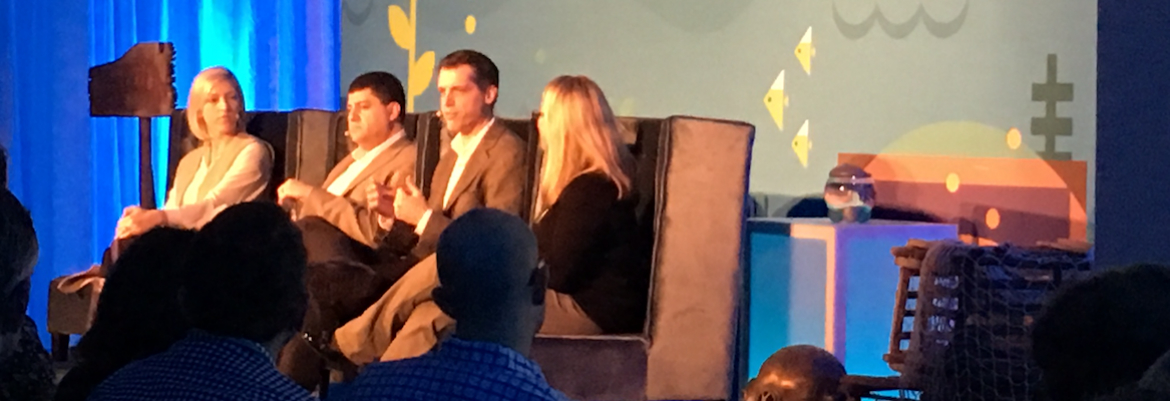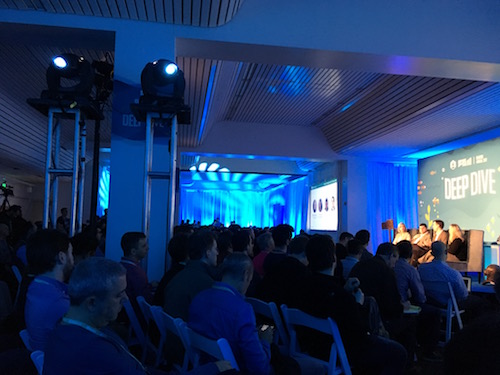
This week we continue our coverage from attending SaaStr Annual 2017. A particularly juicy session, it was standing room only as the panel shared insights on how to ascend to the next level of growth for their SaaS business. Participants included:
- Brooke Gardner – RVP, ISV & Channels, Salesforce
- John Stewart – Founder & CEO, MapAnything
- Bob Marsh – Founder & CEO, LevelEleven
- Kathy Lord – SVP Sales & Customer Success, Intacct

The Basics
“You need to understand early on that when you sell to an enterprise, it’s not just about the technology pieces. These are a host of things you need to close the deal and get through procurement such as a click through license agreement and addressing data privacy issues, etc.” — John Stewart
“Know how to define the customer journey and experience. What will be different as you scale to bigger customers? The dramatic difference as you evolve to a larger scale of customer is the level of service expectation is higher and more personal. Think beyond initial needs and you can keep revenue coming for years to come.” — Kathy Lord
Key Milestones Before You Go for It
“It’s an emotional decision to go for it. If you have other customers, that’s helpful. You can then show how your product could work for a larger enterprise. The expectations are different. You need to have your implementation plan, process, etc. that can be shared when asked.” — Bob Marsh
“Once you close that big deal, you need to get the rest of the company behind you to ensure the implementation is successful. The key is to understand what makes that customer a six figure deal. Is scale based on higher volume of users or more complex models, etc? Also, your existing customers can get you to that six figure mark vs. net new. What current customers match your ICP and are they growing? Map out the milestones of the customer journey and what that means to engineering, product, and customer success. Get a framework for what larger customers are expecting back.”— Kathy Lord
“In SaaS, you want a frictionless acquisition. However, a larger enterprise means a bigger implementation. You need to define what ‘done’ means.” — Bob Marsh
Advice for Founders
“Think about how you sell your product. The number one thing is to map through your current process and what you expect to change or differ.” — Kathy Lord
“Figure out a way to get that first one. Do whatever you need to prove that you can get over $100k for your product. On the new business front, there’s a lot more prep. Research, talk to a lot of people to understand motivations and needs for constituents.” — Bob Marsh
“Be ready to go after it. Your job is to be able to take care of that first customer as best as you can because you will need to reference them for a long time.” — John Stewart
How Transparent Should You be with Your First Big Customer
“Be honest. Invite them to be part of helping design what your product looks like. ‘We want your input because we want more customers like you. We want product feedback from you and we want you to be a referenceable customer.’” — Bob Marsh
“Use your position to your advantage. Your customer can take pride in their unique relationship with you.” — John Stewart
“Ask yourself, is that prospect the RIGHT first six figure customer? They can really accelerate your product and approach to the market but can also be detrimental. If they have a low risk tolerance or aren’t in the sweet spot of where you are looking to develop and grow your product, you’re on a wild goose chase.” — Kathy Lord
About Contracts
“Enterprise customers ask for everything under the sun. When negotiating, give away absolutely no IP assignment rights, and you must have mutual indemnification. We have in-house counsel now due to our deal flow. MapAnything will use the customer’s contract with changes.” — John Stewart
“Impacct doesn’t use the customer’s contract. Our contact is better than the customer’s service contract. It gives better coverage for risk all around. Of course there are exceptions for corporations the size of GE or Boeing.” — Kathy Lord
How to Answer “Will You be Around in Two Years?”
“We are built on Salesforce so we have credibility with scale, security and infrastructure. An easy trick to overcome concern is an escort agreement for source code if you go out of business. Never agree to show them your financials at early stage. It’s ok to say no. If you met table stakes, you have established high value or you wouldn’t be at that stage of negotiation.”— John Stewart
“If they’e really that risk adverse, maybe they’re not the right first six figure account to have.”— Kathy Lord
Final Thoughts
At CodeScience, one of our key differentiators is helping SaaS businesses navigate the labyrinth that is the Salesforce ecosystem. We’ve spent years building relationships and understanding the intricacies of the platform. Want to get to market faster? Or, want to take your simple integration to a full managed package that scales? We’ve brought 250+ products to market on the AppExchange. We can help you.

